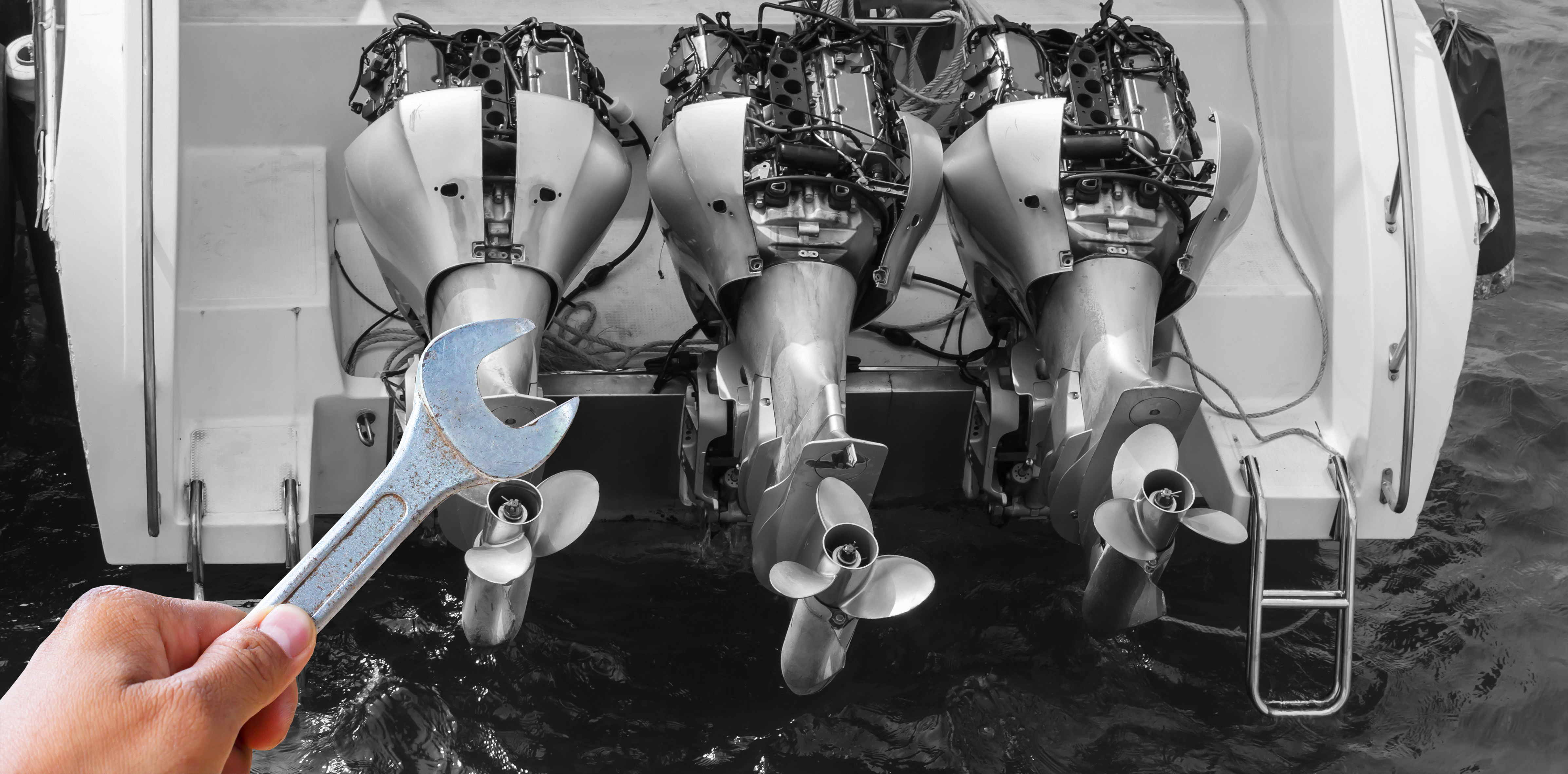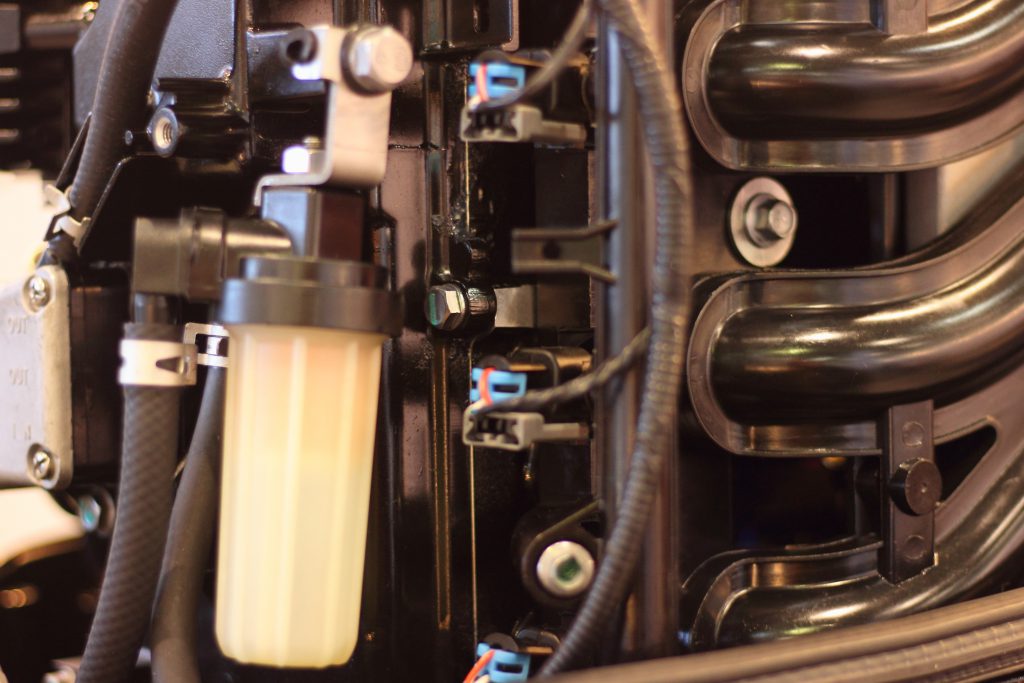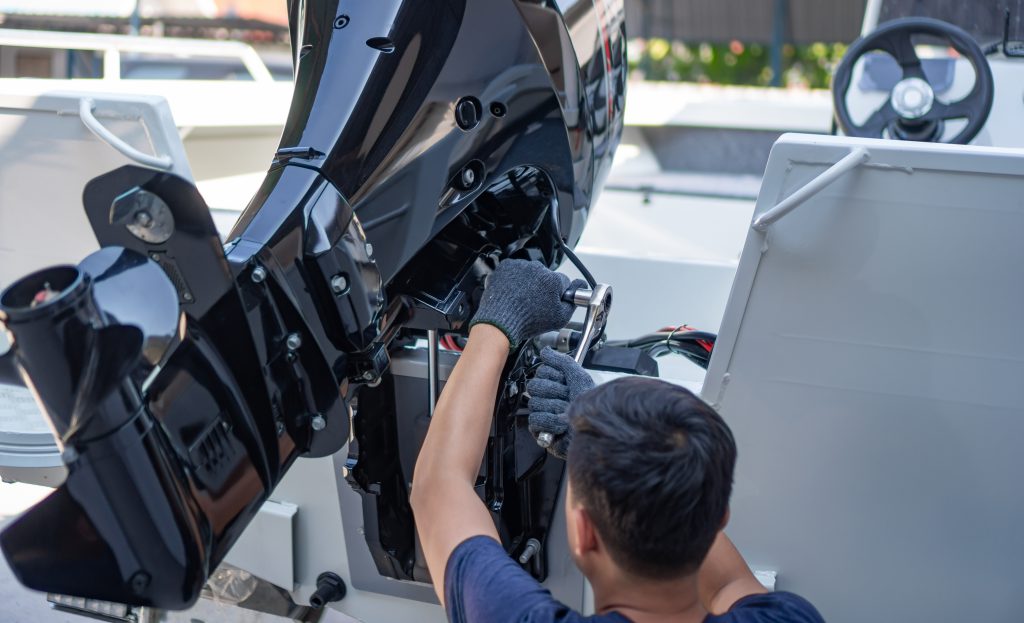Frustrated with your Fuel Systems? Try this!
February 13th, 2022 by team

by B.J. Porter (Contributing Editor)
Few things are more aggravating that an engine which just won’t start, or one that starts and stalls. Whether you’re pulling on your dinghies outboard while your kids wait their towels and gear for a ride to the beach, or cranking your diesel trying to get your sailboat off the mooring at the start of a long weekend, a recalcitrant engine will leave you frustrated.
It can ruin your entire weekend.
A while ago, when talked about [what to do when you can’t start your outboard]( we learned there are three things you need with a gas engine to make it go – fuel, spark, and air. A diesel needs fuel and air (no spark!). Of these, your fuel system is the one which is most likely to cause you trouble, and the one where you can keep that from happening.
Fuel System Components

All fuel systems have a few common components, and any of them can cause you troubles. Not every fuel system has every component, and some have extra things on them, like filters and fuel polishers. But the basics are the same – you have a reservoir of fuel (the tank) that needs to get to the engine somehow, while staying clean so it doesn’t foul the engine.
Tanks
Your fuel tank may be integral to the boat or an external plastic tank. Integral tanks can be steel or plastic and installed in the hull, and some boats have tankage built right into the fiberglass. In all cases, the role of the tanks is to store fuel, so they need to be leak free. Many tanks have vents, and diesel engines usually have return lines to the tank.
Problems with fuel tanks can include dirt and sludge buildup, leaks, blocked vents, and physical deterioration.
Lines
Fuel lines can be petroleum resistant rubber or plastic, or metal. Most outboards have an in-line priming bulb, but inboard engines do not.
All fuel lines can wear, crack, and leak. Pinching lines can damage them or stop fuel flow, and dirty fuel can clog them.
Filters
Dirt and water in fuel is a major cause of engine troubles, and almost every engine will have at least one fuel filter. A small outboard will have an inline filter under the cowling, but a large inboard engine may have external Racor filters mounted off the engine, and one or more screw-on filters on the engine block.
Blocked filters cut off fuel, so replace or change as needed and on a schedule. A clogged filter is a likely reason your engine won’t run!
Pumps
A fuel pump keeps the fuel flowing to the engine. While you prime a small outboard engine with the in-line bulb, once the engine starts, a small pump on the engine keeps the fuel flowing. Larger engine will have lift pumps to draw the fuel from a remote tank to the engine, and fuel injected engines use a separate pump to pressurize fuel for the injectors.
A small outboard may start and run for a brief while with a broken fuel pump because of the initial priming pressure, but it will stall shortly. You can test this by squeezing the primer bulb to keep fuel moving to the engine before it stalls, though stalling can also be caused by a broken check valve in the bulb.
Carburetors (Gas only)
The carburetor on a gas engine vaporizes fuel and mixes it with air before it’s pulled into the cylinders for combustion. The throttle and choke controls run to the carburetor, wihch regulates the fuel flow and air mix. Small jets shoot the fuel into the carburetor’s throat to mix it with air as it’s pulled into the engine. Most small outboards have a single carburetor, but larger outboards may have one for every cylinder.
The holes in the jets are tiny, and they are easily blocked. Buildup of dirt, gunk and deposits in your carburetor can block the jets and disrupt the fuel mixing.
Injectors (Diesel and some gas)
Fuel injected engines don’t use carburetors, instead pressured fuel is atomized by injectors and mixed in the combustion chamber on the piston’s down stroke. The injector pump pressurizes the fuel, and it sprays in a precise jet through the tiny hole in the injector. All diesels are fuel injected, and some gasoline engines may be.
Like the jets in a carburetor, dirt can block the small holes in an injector, starving a cylinder of fuel. A blocked injector won’t necessarily stall your engine, but it will run badly and waste fuel if a cylinder isn’t fueling properly.
Avoiding Problems

If you didn’t catch the theme from the last section about what causes most problem, there’s just one: Dirt. Dirt and contaminants in your fuel system cause most of your fuel related problems. So if you want to avoid problems, consider these tips.
- Change fuel filters regularly, and check them often. Plan scheduled filter changes on a set number of hours, and also change them if they look too dirty. Replacement filters are still cheaper than repairs!
- Use fresh fuel. Gasoline can absorb water if there’s alcohol in it, and gas can get “stale” if left for a long time. Old gas can also leave buildup and deposits if left in carburetors and lines.
- Avoid ethanol gas blends. Many waterfront fuel stations have gasoline-only blends, and they are worth the extra cost. Alcohol in fuel can trap moisture and let water into your fuel lines. Engines used daily aren’t as affected, but if your engine will sit for a few weeks before usage, this can hurt you.
- Get rid of old gas in the fall. Or add a fuel stabilizer when you winterize if you have too much left to dispose of.
- Add biocide/stabilizer to diesel when you winterize, since algae can grow in stagnant diesel. Also, fill your tank to the top at the end of the season to get rid of air in the tank, since this reduces the chance of algae growth.
- Don’t run out of fuel. Running out of fuel is never great for an engine, because it gives a chance for all the crud in the bottom of your tanks to get picked up by the fuel pump. It’s worse with a diesel, because you’ll have to bleed the engine. So keep your tanks topped and fill up before you stall out.
- Drain your carburetors if you won’t be using your boat. Your carburetor has a small bowl with a float that is always full of fuel. If left for weeks, this fuel can evaporate and leave deposits in your carburetor. Many carbs have a small drain screw on the bottom of the bowl, but that’s a nuisance if you have to take the cowl off and collect it. So before you store or leave the boat, disconnect the fuel line while the engine is running and let it run until it stalls. This will empty the fuel in the bowl and keep your carburetor clean.
- Posted in Blog, Boat Care, Boating Tips, Cruising, Fishing, iNavX, iNavX: How To, Interviews, Navigation, News, Reviews, Sailing, Sailing Tips
- No Comments


Leave a Reply